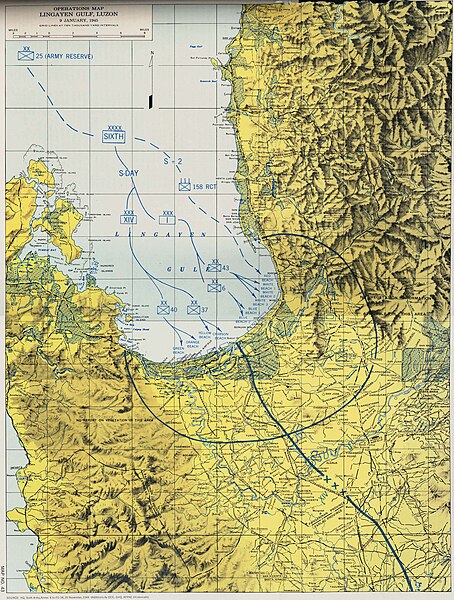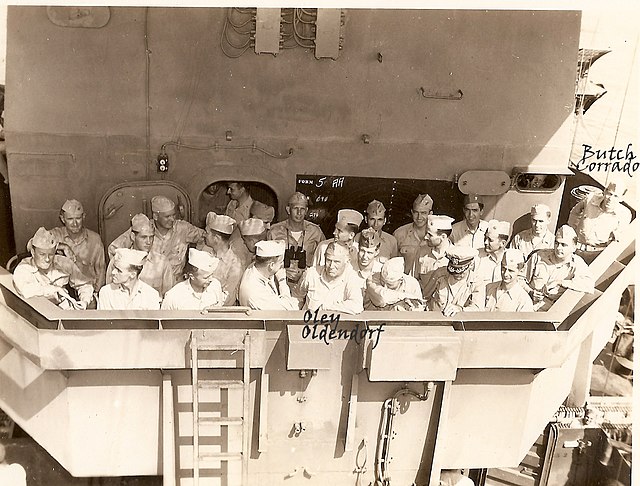Invasion of Lingayen Gulf
The Invasion of Lingayen Gulf, 6–9 January 1945, was an Allied amphibious operation in the Philippines during World War II. In the early morning of 6 January 1945, a large Allied force commanded by Admiral Jesse B. Oldendorf began approaching the shores of Lingayen from Lingayen Gulf, on the island of Luzon. U.S. Navy and Royal Australian Navy warships began bombarding suspected Japanese positions along the coast of Lingayen from their position in Lingayen Gulf for three days. On "S-Day", 9 January, the U.S. 6th Army landed on a roughly 25 mi (40 km) beachhead at the base of the Gulf between the towns of Lingayen and San Fabian.
The U.S. Navy battleship USS Pennsylvania leading the battleship USS Colorado and the heavy cruiser USS Louisville to the shores of Lingayen.
Japanese landings on Lingayen Gulf, 22 Dec 1941
Landing areas for assault forces on Lingayen Gulf, West to East Port Saul, Lingayen Airport, San Fabian, XIV force West, I Corps East
General Douglas MacArthur landing at "Blue Beach," Dagupan, Lingayen Gulf, 1945
Jesse Barrett "Oley" Oldendorf was an admiral in the United States Navy, famous for defeating a Japanese force in the Battle of Leyte Gulf during World War II. He also served as commander of the American naval forces during the early phase of the Battle of the Caribbean. In early 1942, a secret group of senior Navy officers empaneled by President Franklin D. Roosevelt assessed him as one of the 40 most competent of the 120 flag officers in the Navy.
Admiral Jesse B. Oldendorf
Vice Admiral Jesse B. Oldendorf (center) with his Flag Personnel on the Flag Bridge of USS Tennessee in August 1945 at Okinawa
Vice Admiral Jesse B. Oldendorf dictates the terms of surrender to Vice Admiral Hoka and Rear Admiral Yofai on 22 September 1945 at Wakayama, Honshū, Japan.







